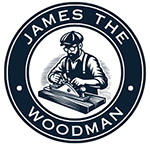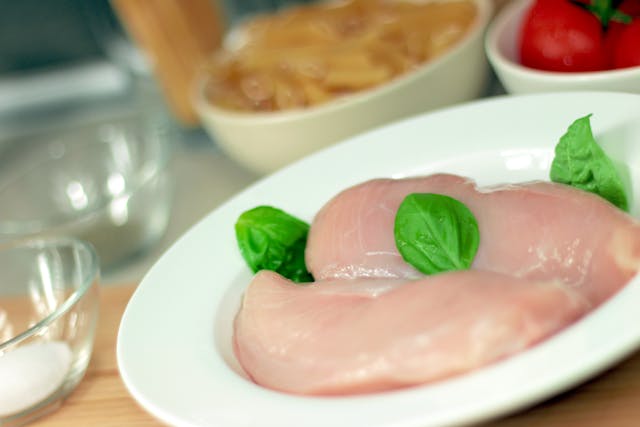Wooden chopping boards are a popular choice in many kitchens because they are durable, gentle on knives, and visually appealing. However, not every type of food is suitable for wooden boards. Unlike plastic or glass, wood is porous, which means it can absorb moisture, odors, and bacteria if not used properly. While wooden boards can last for years with proper care, using the wrong foods on them can shorten their lifespan and even create food safety risks. To keep your board in good condition and ensure your food preparation remains safe, it is important to know which foods are best kept away. Here are five foods you do not want to prepare directly on your wooden chopping board.
Raw Meat and Poultry
One of the most important rules when using a wooden chopping board is to avoid raw meat and poultry. The porous nature of wood allows juices from raw chicken, beef, or pork to seep into the surface. These juices often contain harmful bacteria such as Salmonella, E. coli, or Campylobacter. Even if you wash the board thoroughly afterward, bacteria can linger in the tiny crevices of the wood. Over time, this can pose a serious food safety risk, especially if you use the same board for chopping vegetables or fruits that will not be cooked. While some studies have shown that wood has natural antibacterial properties, this does not eliminate the danger entirely. For raw meat and poultry, it is far safer to use a plastic or composite board, which can withstand thorough scrubbing and even dishwashing at high temperatures.
Strong-Smelling Foods Like Onions and Garlic
Onions, garlic, and other pungent foods can cause lasting problems when chopped on a wooden board. Wood is excellent at absorbing odors, which means that even after washing, the smell of garlic or onion may remain in the board. The next time you slice fruit or bread on the same surface, the lingering smell can transfer, affecting the taste of your food. While this might not seem like a safety issue, it is certainly unpleasant and can undermine the quality of your meals. To avoid this, it is better to use a separate board for onions, garlic, and similar strong-smelling ingredients. If you do accidentally cut them on your wooden board, rubbing the surface with lemon juice or baking soda can help neutralize the odor, but prevention is always more effective than cleaning after the fact.
Fish and Seafood
Fish and seafood are another category of foods that you should avoid preparing on a wooden chopping board. Like meat, raw fish carries the risk of bacterial contamination, particularly with pathogens such as Listeria or Vibrio. In addition, seafood has a distinctive and persistent smell that wood easily absorbs. Even after thorough washing, the odor can remain, and over time your board may develop an unpleasant, fishy scent. Preparing fish on wood also increases the risk of cross-contamination if you later use the board for fresh produce. For fish and seafood, it is best to use a non-porous board that can be sanitized properly after use. This simple precaution helps to protect both your wooden board and your health.
Acidic Foods Such as Citrus and Tomatoes
Acidic foods may not pose the same bacterial risks as raw meat or fish, but they can still damage wooden chopping boards. Citrus fruits like lemons and limes, as well as tomatoes, contain natural acids that can weaken the wood over time. These acids may strip away the protective oils from the board’s surface, leaving it dry and more prone to cracking or warping. Additionally, acids can stain the wood, leaving behind marks that are difficult to remove. Cutting acidic foods on a wooden board occasionally may not cause immediate harm, but repeated use can shorten the lifespan of the board significantly. A safer choice is to cut citrus, tomatoes, and other acidic ingredients on a plastic or glass board, reserving your wooden board for foods that are gentler on the surface.
Soft, Moist Foods Like Cheese
Cheese may seem harmless, but it is another food that can cause problems for wooden chopping boards. Soft cheeses in particular can leave behind oils and moisture that seep into the pores of the wood. This creates an ideal environment for bacteria to grow, especially if the board is not cleaned immediately and thoroughly. Hard cheeses are less of a problem, but even they can leave behind residues that build up over time. Another issue is that cheese tends to stick to wood, making cleaning more difficult. If you enjoy preparing cheese boards, it is better to serve and slice cheese on a surface designed for that purpose, such as a dedicated cheese board or a stone slab. This keeps your main wooden chopping board free from residue and ensures easier maintenance.
Caring for Your Wooden Chopping Board
Knowing which foods to avoid is only half the secret to keeping your wooden chopping board in top condition. Proper care is equally important. After each use, wash the board with warm, soapy water and dry it immediately with a towel. Never leave it soaking in water, as this can cause the wood to warp or crack. To maintain the board’s protective surface, apply a food-safe mineral oil regularly. This helps to keep the wood hydrated, preventing it from drying out and absorbing food residues. For deeper cleaning, you can occasionally scrub the board with coarse salt and half a lemon, which helps to remove stains and odors naturally. With these care practices, your wooden chopping board can remain both functional and beautiful for many years.
Protect Your Chopping Board
Wooden chopping boards are a timeless and practical tool in the kitchen, but they require careful handling to stay safe and durable. Foods such as raw meat and poultry, strong-smelling items like onions and garlic, fish and seafood, acidic fruits and vegetables, and soft cheeses are best avoided on wooden surfaces. These foods can introduce bacteria, leave behind odors, stain or damage the wood, and make cleaning more difficult. By using alternative boards for these items and caring for your wooden board properly, you can enjoy the benefits of wood while protecting your health and your investment. In the end, the secret to a long-lasting wooden chopping board lies in using it wisely and maintaining it with the respect it deserves.

